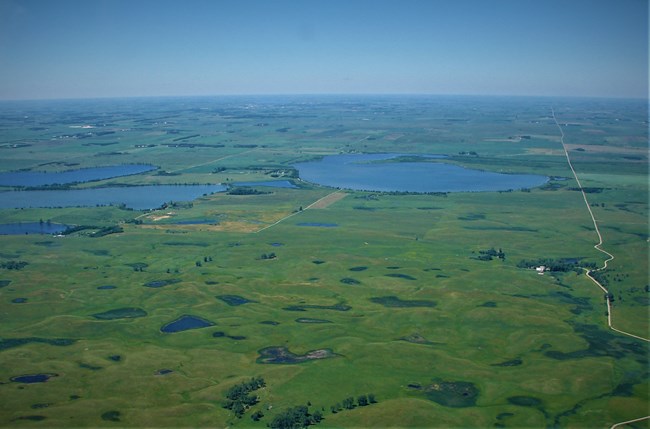Last updated: January 14, 2025
Article
Big Bend of the Missouri

USFWS
In September 1804, Lewis and Clark spent several days hunting and exploring around the Big Bend of the Missouri River. They had good success hunting, and Clark remarked on the birds they saw, including grouse, different varieties of plover, and brants.15
This area is part of a large ecoregion known as the Prairie Pothole region, defined by millions of small wetlands, or potholes, created by glaciation thousands of years ago. More recently, climate change has produced higher temperatures and an extended wet period in the southern part of the region. Wetland ponds have become deeper, longer lasting, and saltier, resulting in a significant shift in the Prairie Pothole environment and affecting the habitat for wildlife.16
Citations:
15 NPS, “Big Bend of the Missouri,” Pittsburgh to the Pacific: High Potential Historic Sites of the Lewis and Clark National Historical Trail, 2022, 52, https://www.nps.gov/lecl/getinvolved/upload/2022_LCNHT_HPHS_Report_508compliantUPDATE-2.pdf; William Clark, September 21, 1804 entry, in Gary E. Moulton, Journals of the Lewis and Clark Expedition, https://lewisandclarkjournals.unl.edu/item/lc.jrn.1804-09-21.
16 Owen P. McKenna, et al., “Evidence for a Climate-Induced Ecohydrological State Shift in Wetland Ecosystems of the Southern Prairie Pothole Region,” Climatic Change 145 (2017): 273–87, here 274, 278, 285; David A. Renton, David M. Mushet, and Edward S. DeKeyser, “Climate Change and Prairie Pothole Wetlands—Mitigating Water Level and Hydroperiod Effects Through Upland Management” (Washington, DC: U.S. Geological Survey, 2015), 1–3.
